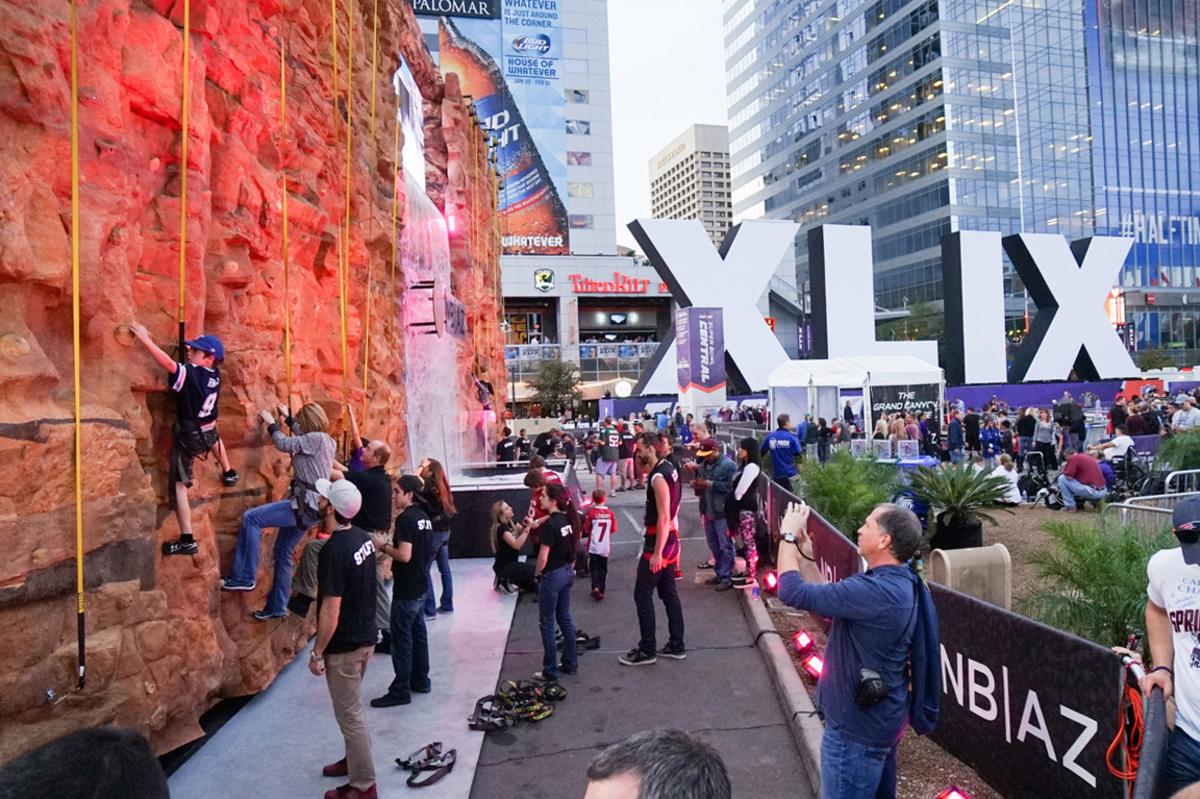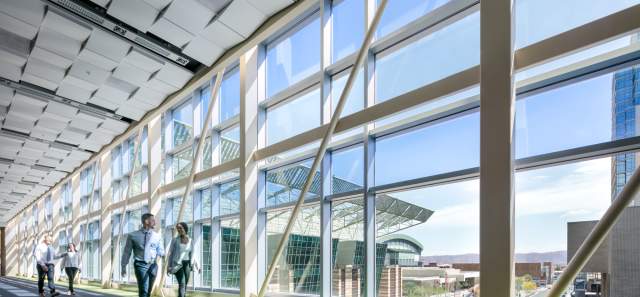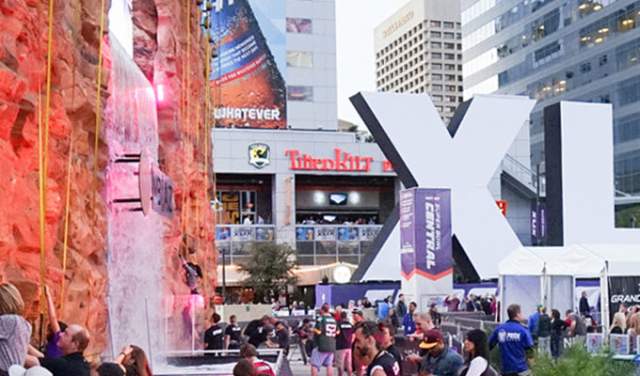Big Wins: What Makes an Event City?
Take a page out of Phoenix's mega event playbook and bring die-hard fan energy to your next meeting.
When you want to understand how a city that rose from the floor of a lush desert becomes one of the most sought-after meeting and convention destinations, take a page out of Greater Phoenix’s playbook.
Sure, we know what makes a major event city by the numbers: room nights and RFPs amount to meaningful data for industry professionals. But the appeal of a destination isn’t just about metrics — it’s about energy, infrastructure, and even an ineffable “it” factor.
A destination can exhibit its buzz-worthiness as an event city in many ways. Think of New York City’s Broadway or New Orleans’ Mardi Gras. These are bucket-list experiences that associate particular places with magic — and drive enthusiasm for attendees. These correlations have proven to generate a certain buzz that extends clear into any event hosted in that town, any time of year.
Another way destinations capitalize on die-hard fan energy is via mega-event prowess — any number of high-profile events that catapult choice cities into mainstream awareness based on combined marketing efforts and fan fervor. In turn, savvy planners are leveraging such visibility to entice and energize attendees.
On a more practical front, these destinations are engineered to help planners facilitate their biggest ideas. If a city can host a large-scale event that draws tens of thousands of attendees, you can bet they’ll have the infrastructure and know-how to help you score big with a new product launch or memorable annual meeting.
 The WM Phoenix Open is regularly the highest attended tournament on the PGA Tour.
The WM Phoenix Open is regularly the highest attended tournament on the PGA Tour.
Harnessing the Buzz of Mega Events
Of course, there are countless cities that offer incomparable experiences year-round. But, for planners looking for new ways to inspire attendees, tapping into the energy surrounding events that have a national profile and impact can lead to selecting inspiring new destinations for your association.
Each year, attendees eagerly await the announcement of where they’ll be heading for your next event — much like the teams and fan bases heading to the NCAA’s bowl games and Final Four tournaments. But the similarities don’t end there.
“The effects of mega events reach far beyond a singular game or event day,” says Ron Price, Visit Phoenix President and CEO. “They tell a collective story about what a destination has to offer to a global audience. That valuable exposure invites viewers to picture themselves here and offers a glimpse of the experiences that await them in a way that no other marketing effort or word-of-mouth can achieve. It’s invaluable.”
A parallel process occurs when planners announce their host city and open the invitation up to attendees.
“There is an excitement, a buzz, that leads to a heightened awareness of the host destination among attendees as event planning and preparations begin,” Price adds. “In Phoenix, we’re very fortunate to host both attendees and fans on a regular basis, and the two continue to complement each other in incredibly unique ways.”

Each year, two million guests come to PHX Arena for entertainment and sports events. Courtesy photo.
The Value of the Global Stage
To supplement the fanfare of roving mega events, there’s also the home-court advantage factor. Which, if you’re Phoenix, means a lot of new eyes on your championship destination.
In recent years Greater Phoenix has hosted mega events including Super Bowl LVII in 2024 and the 2024 Men’s NCAA Final Four. The destination is also home to the PGA’s annual Waste Management Open and the MLB’s Cactus League spring training. Prior to those recent successes, in 2021 Phoenix became the first city in 20 years to make the NBA and WNBA Finals in the same season.
The prestige of hosting those renowned events has paid off for Greater Phoenix. On the horizon, the nation’s fifth-largest city will be the host of the 2025 Phoenix Marathon which is a Boston Marathon qualifier, as well as the 2026 Women’s NCAA Final Four and NBA All-Star 2027.
Naturally, the hype surrounding particular places soars at given times, and event organizers can follow this energy to create impactful experiences of their own.
 Ahead of Super Bowl XLIX in 2015, fans flocked to Super Bowl Central in downtown Phoenix.
Ahead of Super Bowl XLIX in 2015, fans flocked to Super Bowl Central in downtown Phoenix.
Leveraging a Championship Infrastructure
Cities that host massive events, festivals, and more have a unique advantage: They know how to get things done. They’re set up in ways that appeal to multiple types of groups and personalities. They offer such resources as accommodations, dining and entertainment —and they’ve been vetted by thousands of visitors at a time.
When you choose to host a meeting in an event city, you’ll likely want for nothing. And that includes airlift, public transportation, attractions, public health and safety infrastructure, and recreational opportunities, too.
Consider, for instance, that downtown Phoenix’s PHX Arena is home to the Phoenix Suns and Phoenix Mercury — but it’s also a venue that’s used in various ways for meetings, including hosting massive youth conventions and smaller groups of VIPs in the new, all-inclusive luxury suites.
When it comes to mega events, the host venue is just one player on the all-star roster. During recent events like the NCAA Men’s Final Four and Super Bowl LVII (both in 2024), the city hosted immersive experiences for fans who were visiting the destination to be a part of the excitement. Additionally, in the days leading up to Super Bowl XLIX at (the now) State Farm Stadium in Glendale, the Phoenix Convention Center was home base to the 2015 NFL Experience, and Super Bowl Central spanned 12 city blocks in the heart of downtown Phoenix.
“Along with mega events, you often have ancillary events that take place at such venues as city parks or downtown streets,” Price says. “Here in Phoenix, our convention center campus is laid out so that the street running between two buildings can be closed to traffic and transformed into an 80,000+ square-foot outdoor venue of its own: Canyon on Third. That foresight from several years ago continues to serve large groups with effortless access to everything you would expect of a top-tier indoor venue, only on a much larger scale.” This is just one example of the outside-the-box infrastructure that wouldn’t be possible if not for Phoenix’s mega-event investments.

State Farm Stadium will host its third Super Bowl on Feb. 13, 2022. Courtesy photo.
Capturing That “It” Factor
Beyond the infrastructure, these cities also have the expertise and institutional knowledge to make things happen. They are packed with professionals with the necessary experience to pull off any logistical feat.
Price notes that hosting mega events is not just a great honor, but also an incredible team effort involving a roster of many players including corporate partners, host committees, and the destination marketing organization.
“The same group of destination professionals that are working on hosting these mega events — whether it be the Super Bowl, Final Four, or college bowl games — is the same group that’s going to be working for you and delivering an incredible event for your attendees,” he says. “We have the ability to orchestrate something on a grand scale and also apply that to all sizes of meetings that we have the honor of hosting here.”
In addition to the logistics, infrastructure, and institutional knowledge, event cities just have an undeniable “it” factor that excites potential visitors and drives an enthusiastic attendance to an event of any size or scale.
“When you think about the country’s great destinations, they have unique, eclectic offerings for travelers, great culture, the culinary aspect — all of it,” Price says. “Cities that host these types of events, they’re on the world stage. There’s a cachet. Attendees are looking for that type of excitement that you find in those destinations and the hospitality that comes with it.”
All-Star Venues For Your Next Event in Phoenix
When researching venues that can do it all and do it well on the largest scale, it’s important to think big. Here are a few great options to consider in Greater Phoenix.
- Downtown’s PHX Arena is home to the the Phoenix Suns and Phoenix Mercury basketball teams and site of the 2024 NCAA Men’s Final Four.
- State Farm Stadium hosted Super Bowls XLIX and LVII.
- Chase Field is home to the Arizona Diamondbacks baseball team.
- TPC Scottsdale annually hosts the PGA's WM Phoenix Open.
- The Phoenix Convention Center is also home to the outdoor event space Canyon on Third.
- Wild Horse Pass is home to the Phoenix Rising FC stadium as well as Rawhide Western Town & Event Center.
This story was written and published by Associations Now. For more meetings trends in Phoenix, visit AssociationsNow.com.
Spacious, Inventive Meeting Spaces Are the Way of the Future
Find out how one-of-a-kind venues — including Chase Field — set the stage for unforgettable…
Get the Meetings Newsletter
Stay informed on openings and renovations, what’s new in downtown and more.
Order A Meeting Planner Guide
Our Meeting & Travel Planner Guide has the details on things to do downtown, the convention center…






